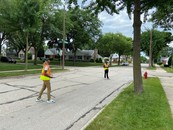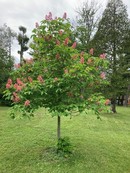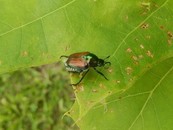|
Note: Images may appear blurry in some web browsers. We recommend opening links in Google Chrome.

Kolin Bilbrew and Odell Kimble, both rising juniors in the Urban Forestry program at Southern University in Baton Rouge, Louisiana, spent two months in Milwaukee learning about urban trees, forest management, and data collection. Read more...
|
 |
|
The Stevens Point Forestry Department has created an interactive GIS map called Iverson Park Trees. This map allows a self-guided tree walk that identifies 31 trees that are underused or not common to the area, with the goal of this map of helping residents learn about uncommon trees they can incorporate on to their private property. Read more... |
Studies find that tree canopy cover can provide shade that reduce the heat absorbed in paved surfaces and lower surface temperature in general. However, many policies that try to implement urban forests as cooling effects focus on large green spaces, which are often not feasible in urban areas. Read more...
Ordinances are one step communities can take to shift from reactive to proactive management and avoid large, unexpected maintenance costs. Read more...
The University of Wisconsin Stevens Point is hosting a workshop that will be of interest to those wanting to learn how to identify potential hazards and structural health concerns of trees. Read more...
 |
|
Japanese beetles (Popillia japonica) are an invasive insect that feed on many plant species. They skeletonize leaves, which means that they eat the material between the veins and often leave lacy veins that turn brown and curl. Read more... |
 |
|
Tubakia leaf spot (Tubakia dryina) is a leaf disease that typically affects the lower canopy of oaks. It caused some issues in 2021 and is affecting red oak trees in north-central Wisconsin this year as well. Read more... |
Forest Health
Forest Products
Reforestation
|